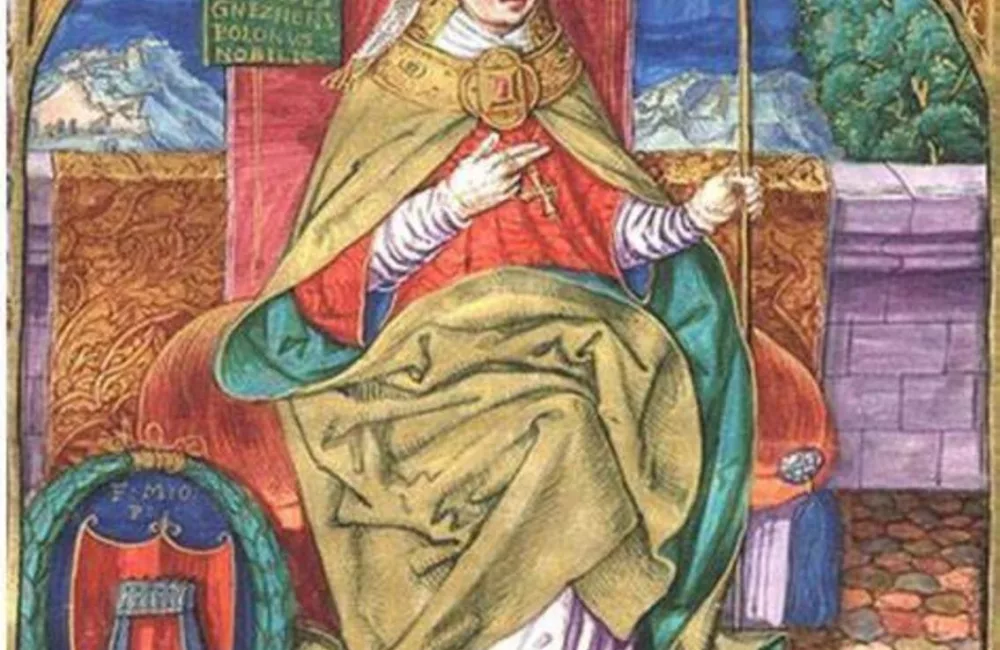For nearly 2,000 years, the papacy has stood as the symbol of divine authority in Roman Catholicism, believed to descend in an unbroken line from Saint Peter, the first bishop of Rome. This lineage has always been assumed to consist entirely of men — a fact woven into the theological and institutional fabric of the Church itself. And yet, for over 800 years, there has persisted a tale so bold and so scandalous that it defies this foundation: the story of Pope Joan, a woman who, disguised as a man, rose through the ranks of the clergy and ascended to the papal throne.
Is it merely a myth, designed to serve as either satire or propaganda? Or could there be a kernel of truth buried within the murky records of medieval history? The mystery of Pope Joan is one of the most enduring legends of the Catholic Church — and one of its most controversial.
The Legend of Pope Joan
The most common version of the tale places Joan’s life in the 9th century, during a time when historical documentation was often sparse, inconsistent, or subject to political manipulation. She was said to be an exceptionally intelligent woman, born either in Mainz, Germany, or in England, who disguised herself as a man to pursue a life of scholarship and religious devotion — opportunities categorically denied to women at the time.
Taking the name John Anglicus, she allegedly joined a monastic community and quickly distinguished herself through her knowledge of theology, languages, and philosophy. Her rapid ascent through the clerical ranks supposedly led her to Rome, where she became a trusted advisor to high-ranking clergy and was eventually elected pope by popular acclaim, completely undetected as a woman.
According to the most scandalous accounts, Pope Joan ruled for two years before unexpectedly giving birth during a papal procession between the Colosseum and St. John Lateran. Shocked and horrified, the crowd turned on her. In some versions, she was stoned to death on the spot. In others, she died shortly after childbirth, and her name was stricken from all official papal records. The Church, some claim, went to great lengths to erase her existence entirely.
The Earliest Sources
The earliest written reference to Pope Joan does not appear until the 13th century, nearly 400 years after her supposed reign. The first brief mention comes from Jean de Mailly, a Dominican friar, who includes her in his Chronica Universalis Mettensis around 1250 AD. A more detailed and enduring account appeared soon after in the work of Martin of Opava (Martin Polonus), a papal notary and chronicler.
Martin’s version placed Joan’s reign between Pope Leo IV (d. 855) and Pope Benedict III, which gave the story a plausible historical context. The tale quickly spread throughout Europe, appearing in monastic chronicles, vernacular literature, plays, and even church guides. By the 14th and 15th centuries, her story was widely accepted as fact in many regions — even among some clergymen.
Interestingly, some Renaissance-era texts and artwork even included Pope Joan in lists and illustrations of legitimate popes. In other words, for several centuries, her existence was not universally dismissed as it is today.
How the Story Was Used
The story of Pope Joan has been used in dramatically different ways by different groups over time.
During the Protestant Reformation, figures like Martin Luther and other reformers seized on the legend as evidence of the Catholic Church’s corruption, fallibility, and deception. For them, the idea that a woman could become pope — and that the Church would try to hide it — was a perfect example of why the institution could not be trusted.
On the other hand, Catholic counter-reformers condemned the story as an anti-papal fabrication. By the 17th century, the Church declared the legend heretical, and scholars loyal to the Vatican began actively debunking the myth.
And yet, the story endured — especially in popular literature, where the figure of Pope Joan became a symbol of both transgression and resistance. For some, she was a cautionary tale. For others, a proto-feminist icon who dared to defy a rigid, male-dominated hierarchy.
The “Sedia Stercoraria” Controversy
One of the strangest pieces of alleged evidence used to support the Pope Joan story involves a peculiar chair used in medieval papal ceremonies known as the sedia stercoraria — a Roman-style stone or marble seat with a large hole in the center.
According to some historians and folklorists, beginning in the 11th or 12th century, new popes were required to sit on this throne during their coronation, while a young cleric reached underneath to verify the pope’s male anatomy, declaring, “He has testicles and they are well hung.” This ritual, if real, would imply a response to some historical embarrassment — like the reign of a disguised female pope.
The Vatican denies that such a ritual ever existed for that purpose. Other scholars argue the chair may have had ancient Roman origins and served a more symbolic function, possibly tied to humility or purity. But the existence of the chair — still visible in the Vatican Museum today — only deepens the intrigue surrounding Pope Joan.
Did She Actually Exist?
Today, most academic historians consider Pope Joan a legend, albeit a persistent and fascinating one. Several major issues undermine her historicity:
- Lack of contemporary records: No mentions of a female pope appear in the official Vatican registers, nor in any documents written at the time she supposedly lived. The earliest mentions occur centuries later, which casts significant doubt.
- No confirmed identity: Multiple versions of the story place Joan in different time periods, countries, and religious orders. The lack of a consistent identity suggests a mythological rather than historical origin.
- Chronological conflicts: The placement of her reign — often between Leo IV and Benedict III — is contradicted by well-documented papal elections and imperial correspondence from that period.
And yet, mystery remains. Medieval historical documentation was far from perfect. Many events, including papal schisms and even some popes themselves, were later revised, renamed, or erased for political reasons. Could Pope Joan have been one of them?
Why the Story Resonates
The enduring appeal of Pope Joan is not just about whether she was real. It’s about what she represents.
In a world where women were denied basic education, where they could not own property, lead religious services, or engage in scholarly debate, the idea of a woman who could outthink the most educated men in Christendom — and reach the pinnacle of religious power — is both shocking and inspiring.
Pope Joan has become a symbol of resistance against rigid structures of patriarchy and dogma. She represents the idea that truth can be disguised, that intelligence transcends gender, and that even the most powerful institutions are vulnerable to human fallibility and deception.
Pope Joan in Modern Culture
Despite being rejected by the Church, Pope Joan remains a cultural phenomenon.
- In 1996, Donna Woolfolk Cross published a bestselling novel titled Pope Joan, which was later adapted into a film in 2009.
- She has appeared in operas, stage plays, and graphic novels.
- Numerous academic studies continue to explore the sociopolitical implications of her story, especially in the context of gender, myth-making, and religious symbolism.
Even as mainstream scholarship dismisses her as a fabrication, artists and thinkers continue to find deep meaning in her legend.
Could a Woman Ever Become Pope?
The story of Pope Joan also raises a modern question: could a woman ever legitimately become pope?
According to current Catholic doctrine, only ordained priests may be considered for the papacy, and only men can be ordained. Therefore, a woman becoming pope would require a complete overhaul of canon law and centuries of theological tradition.
However, some progressive voices within Catholicism have begun advocating for a reexamination of the role of women in church leadership. While the Vatican has made no moves toward allowing female priests — let alone a female pope — the very existence of the Pope Joan legend continues to challenge institutional boundaries and spark conversations about what leadership should look like in a modern church.
Conclusion
Whether Pope Joan was a brilliant historical figure whose secret was covered up by a scandalized church, or a clever legend crafted to critique religious authority, her story remains one of the most provocative narratives in religious history.
She may not have existed in the flesh, but her symbolic power endures. She stands for the outsider, the challenger, the questioner — and for every woman in history who has had to disguise herself just to be heard, seen, or taken seriously.
In a world where myths often reveal deeper truths than facts, Pope Joan reminds us that power is not always what it seems — and neither is history.
Was there truly a woman who once sat on the papal throne, holding the keys of Saint Peter while carrying a secret no one dared imagine? The answer may never be known. But the question, in itself, is worth asking.






